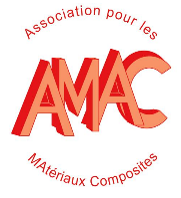Melanie Herman, Wim Doeland
European Union Aviation Safety Agency
Reliability of Composite Analysis: From Calibration to Definition of Validation Domain
Today’s practice of composite airframe structural design, development, and certification continues to rely heavily on extensive physical testing to validate analysis and substantiate structural capability. Within the aerospace industry, this approach to compliance has resulted in acceptable safety levels in aviation. However, due to the increasing implementation of new technologies and the expansion of flight envelopes, aircraft development costs and time to market have risen significantly.
The traditional method of certifying aircraft structures—relying extensively on physical testing to demonstrate compliance—impacts both development costs and timelines for applicants. Meanwhile, the use of Modelling and Simulation (M&S) in aerospace product development has advanced significantly, and this trend is expected to continue in the coming years.
These enhanced M&S capabilities are being increasingly introduced into compliance demonstration for certification purposes. Certification Authorities acknowledge that Certification by Analysis can reduce development time and costs for composite aircraft structures and accelerate the overall certification process. However, regulators’ primary objective is to ensure that the introduction of compliance demonstration approaches supported by M&S does not lead to a reduction in safety levels.
How can aviation safety levels be maintained while reducing the amount of testing required for compliance demonstration? How can the adequate level of testing be determined to ensure the reliability of the analysis? This discussion should primarily focus on similar new structures from EASA’s point of view, assuming that the verification of the computational model—supported by previous test evidence—has been formerly approved. The discussion could be extended to new structures in a subsequent step.
In this presentation, EASA will outline the requirements and expectations for compliance demonstration with proof of structure, focusing on large aircraft applications. EASA will then provide insights into defining the validation domain for analysis, supported by physical testing.
The importance of robust protocols for model calibration, modelling rules, and multi-scale strategies will be highlighted as part of the validation domain definition.
Finally, EASA will share its perspective on compliance demonstration expectations for the intended application domain, aiming to address gaps between this domain and the validation domain.


